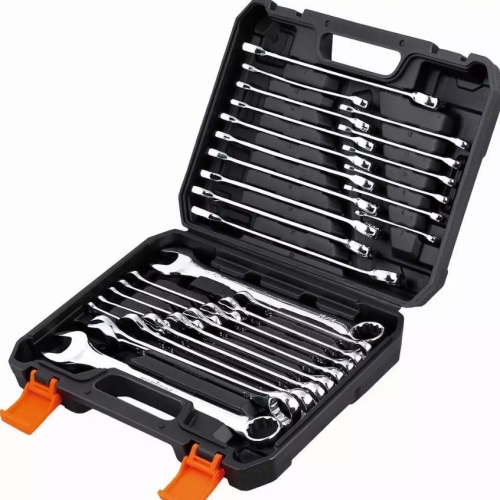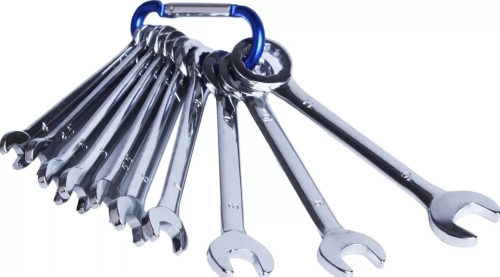A wrench is a widely used hand tool, usually used to tighten or loosen various bolts, nuts and other fixings. Although its structure is simple, its function is extremely powerful, and it can be seen in almost every occasion that requires mechanical maintenance and assembly.
There are many kinds of wrenches, common open wrenches, box wrenches and adjustable wrenches. The two ends of the open wrench have different sizes of openings, suitable for nuts of different specifications; The head of the box wrench is closed to provide a better grip and reduce the possibility of sliding; The adjustable wrench is known for its flexibility, and the user can adjust the opening size of the wrench to fit a variety of different nuts and bolts. These different types of wrenches have their own characteristics and can meet the needs of various mechanical operations.
One thing to pay attention to when using a wrench is the way the force is applied. Effective application of force can ensure that the nut is fastened in place, otherwise it may cause the nut to become loose or damaged. Therefore, it is very important to master the correct use of skills. In the operation process, it is usually recommended that the user use two hands, one hand to hold the handle of the wrench, and the other hand can gently support or guide the wrench to improve the stability of the application of force.
In addition to the basic functions, the wrench can also be used in combination with other tools to improve work efficiency. For example, in some complex assembly processes, wrenches can be paired with power tools, which can both quickly complete the task and ensure the degree of tightness of the connection. However, when using these tools, you also need to be vigilant at all times to avoid unnecessary damage or safety hazards.
It is worth mentioning that the material of the wrench will also affect the service life and performance of the tool.
















